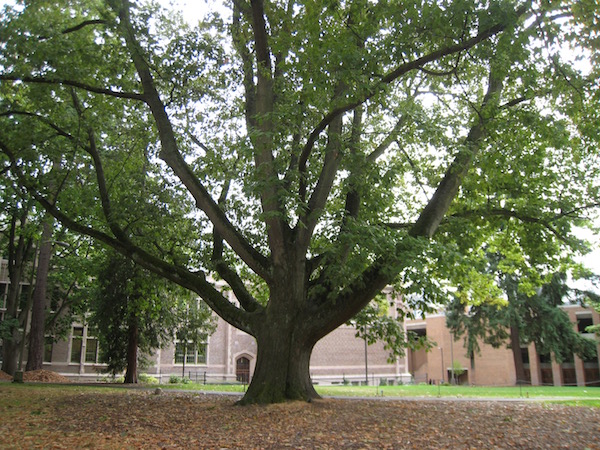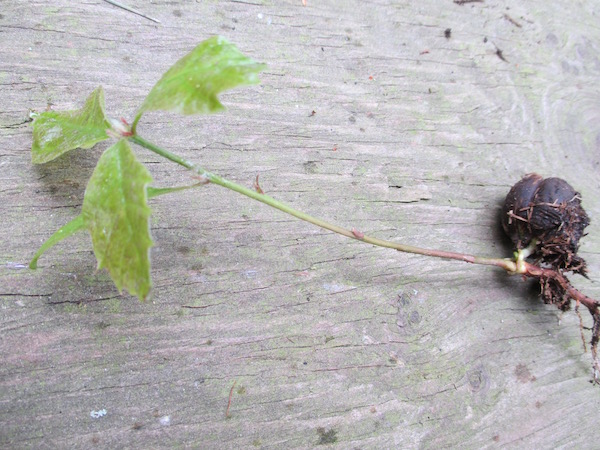Plant of the Month: October 2016
|
Red Oak
|
Quercus rubra L.
|
| = Quercus borealis Michx. fil. |
| = Quercus maxima (Marsh.) Ashe |
FAGACEÆ; Beech Family
|
| When I deliver a lecture titled America's Top 40 Trees, the Oaks (genus Quercus) are number two, beat only by the Redwoods. One of the most common oak species in Seattle, that is also the widest growing tree of any kind here presently, is the common or Northern Red Oak, Quercus rubra. |
| Genus Quercus at least in North America, is divided into red oaks and white oaks. The red oak acorns take two years to ripen, not one. Red oaks do not live as long usually. Red oaks have darker wood, usually. Red oak leaf lobes (if any) are bristle-tipped, most white oak leaf lobes are comparatively blunt. Red oak acorns are usually bitter, white oak acorns often sweet. Red oak bark is dark usually, rather than pale. Red oak young foliage in spring is yellowish usually, not often pinkish, red or bronzy. |
| Live oaks (evergreen species) can be either in the red or white oak groups. |
| The common Red Oak, also called Eastern or Northern Red Oak, is native in central and eastern North America, and planted widely elsewhere. It is the State Tree of New Jersey. The tallest ever recorded towered 165 feet. The stoutest trunk measures more than 26 feet in circumference (over 30 feet in coppiced specimens). The widest branch spread noted as far as I am aware is right here in Seattle at 136 feet. But almost certainly older trees elsewhere are wider. The Seattle tree, on the U.W. campus Denny Hall lawn, is just under 100 feet tall, its trunk about 17 feet around. It was planted in the 1890s. |
In Seattle, Red Oak stands out among other red oaks in its breadth, huge size in a hurry, wide leaves, and notably plump large acorns with cups usually shallow. Its fall color is not as pleasing as many other oaks, but is still okay, as my photo below shows. It is naturalized sparingly in Seattle, but mature trees reseed here readily.
Back
|

wide Quercus rubra at U.W.; photo by ALJ
|

Quercus rubra fall color; photo by ALJ
|

Quercus rubra typical seedling with its acorn; photo by ALJ
|

Quercus rubra albino seedling; photo by ALJ
|
|
|

